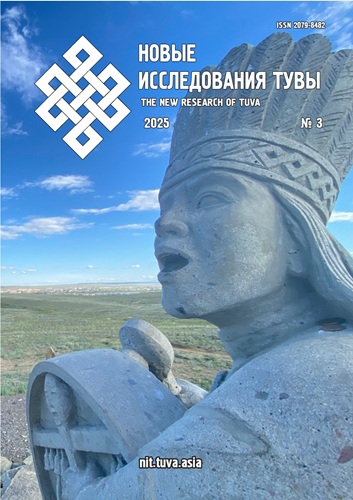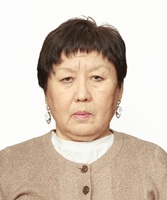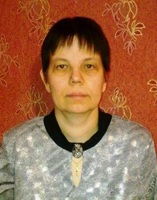Ethnolinguistic Characteristics of Usernames in the Virtual Environment of Kalmykia
DOI:
https://doi.org/10.25178/nit.2025.3.25Keywords:
Kalmyk language; ethnolinguistics; ethnolinguocultural studies; nickname; virtual communication; social network; virtual onomasticon; Kalmyks; Republic of KalmykiaAbstract
This article analyzes the ethnic component of anthroponymic units (usernames) identified in the virtual communication of residents of Kalmykia. The data for analysis consisted of usernames of members of online communities discussing a variety of issues pertaining to the public life of the republic on the “VKontakte” (VK) social network platform.
The role of online nicknames in virtual communication is determined. Trends are identified in which Internet users choose usernames based on the traditions of traditional Kalmyk culture. The implementation of ethnic elements is reflected in the semantics of proper and common nouns within usernames. Semantic groups are identified in which the ethnic component of usernames is expressed. These groups include nicknames that reference personal names, physical appearance, nationality, and regional affiliation. Usernames containing plant names (phytonyms) and place names (toponyms) are also analyzed.
A notable feature of usernames among Internet users from the Kalmyk segment of VKontakte is their two-part structure, predominantly consisting of a given name and surname, less frequently including a patronymic. Instances of name borrowing from various languages are noted. An active use of ethnic Kalmyk vocabulary is observed. The semantics of the analyzed usernames reflect traditional rituals.
Usernames of Internet users from Kalmykia serve as important elements in constructing identity and cultural uniqueness, functioning as distinctive markers that reflect both individual and collective features of users.
References
Avlyaev, G. O. (2002) The Origin of the Kalmyk People. Elista, Kalmyk Book Publishing House. 326 p. (In Russ.)
Avchieva, D. T. (2015) Systemic Connections of the Term ‘Nickname’. Gumanitarnye nauki i obrazovanie, no. 4 (24), pp. 103–106. (In Russ.)
Alekhirenko, N. F. (2016) Linguacultural Studies: The Value-Semantic Space of Language. Moscow, Flinta. 288 p. (In Russ.)
Aliyeva, G. N., Kasumova, A. Sh. and Kurbanova, O. V. (2018) The Ethnic Component in the Nicknames of the Minority Internet. Filologicheskie nauki. Voprosy teorii i praktiki, no. 5–1 (83), pp. 51–54. (In Russ.) DOI: https://doi.org/10.30853/filnauki.2018-5-1.9
Arutyunov, S. A. (1995) Ethnolinguistics. Etnopoliticheskii vestnik, no. 5.1, pp. 145–151. (In Russ.)
Bakaeva, E. P. (2009) Buddhism in Kalmykia: Main Stages of History. Buddhizm Rossii, no. 42, pp. 9–17. (In Russ.)
Balkunova, A. S. (2010) Nickname as a Special Group of Proper Names. In Humanities in the Modern World: Proceedings of the Second International Scientific and Practical Internet Conference, October 26 — November 8, 2009, ed. by M. A. Litovchenko. Tambov, Izd-vo IP Chesnokova A. V. 250 p. Pp. 35–37. (In Russ.)
Bobrikhin, A. A. (2010) Representations of Ethnic Identity in Modern Culture. Mezhdunarodnyi zhurnal issledovanii kul’tury, no. 1, pp. 31–36. (In Russ.)
Ball, M. (2023) The Metaverse: How It Is Changing Our World. Moscow, Alpina Publisher. 362 p. (In Russ.)
Byleva, D. S. (2013) Semiotics of Self-Identification Signs on the Internet. Nauchno-tekhnicheskie vedomosti Sankt-Peterburgskogo gosudarstvennogo politekhnicheskogo universiteta. Seriya: Gumanitarnye i obshchestvennye nauki, no. 1 (167), pp. 25–29. (In Russ.)
Galichkina, E. N. (2021) Virtual Personality as an Object of Study in Anthropological Linguistics. Aktual’nye problemy filologii i pedagogicheskoi lingvistiki, no. 2, pp. 28–38. (In Russ.) DOI: https://doi.org/10.29025/2079-6021-2021-2-28-38
Golovnev, A. V., Belorussova, S. Yu. and Kisser, T. S. (2021) Virtual Ethnicity and Cyberethnography. St. Petersburg, MAE RAN. 280 p. (In Russ.)
Grebenkina, E. K. (2022) On the Emergence of Ethnolinguistic Research (Ethnos — Language — Culture). Evraziiskii gumanitarnyi zhurnal, no. 1, pp. 34–43. (In Russ.)
Daldinova, E. O.-G., Buraeva, T. V. and Kekeeva, T. M. (2024) Features of Online Nicknames on Kalmyk Forums. Vestnik Kalmytskogo gosudarstvennogo universiteta imeni B. B. Gorodovikova, no. 3 (63), pp. 55–64. (In Russ.) DOI: https://doi.org/10.53315/1995-0713-2024-63-3-55-63
Esenova, T. S. (2023) The Concept ‘Bain / Wealth’ in the Kalmyk Language (Based on Lexicographic and Folklore Material). Mongolovedenie, vol. 15, no. 3, pp. 458–469. (In Russ.) DOI: https://doi.org/10.22162/2500-1523-2023-3-458-469
Zubareva, A. V. (2021) Onyms in Internet Communication: New Phenomena and Functions. Aktual’nye problemy filologii i pedagogicheskoi lingvistiki, no. 1, pp. 120–136. (In Russ.) DOI: https://doi.org/10.29025/2079-6021-2021-1-120-136
Kazyaba, V. V. (2016) Nominal Transposition in the Sphere of Nicknames of German-Speaking Internet Users. Uchenye zapiski Petrozavodskogo gosudarstvennogo universiteta, no. 1 (154), pp. 43–48. (In Russ.)
Kazyaba, V. V. (2020) On the Selection of Material for Anthroponymic Research of Nicknames (Based on the German-Language Internet Segment). Voprosy onomastiki, vol. 17, no. 1, pp. 223–235. (In Russ.) DOI: https://doi.org/10.15826/vopr_onom.2020.17.1.013
Kazyaba, V. V. (2022) Self-Nominations with the Function of an Anthroponym on the Russian-Language Internet. Nauchnyi dialog, vol. 11, no. 7, pp. 212–230. (In Russ.) DOI: https://doi.org/10.24224/2227-1295-2022-11-7-212-230
Kalmyks (2010). Ed. by E. P. Bakaeva and N. L. Zhukovskaya. Moscow, Nauka. 568 p. (In Russ.)
Kasyanov, V. V. (2018) Virtual Space as a New — “Old” Sociocultural Phenomenon. Uchenye zapiski Krymskogo federal’nogo universiteta imeni V. I. Vernadskogo. Sotsiologiya. Pedagogika. Psikhologiya, vol. 4 (70), no. S2, pp. 38–42. (In Russ.)
Kisel, O. V. (2021) The Place of a Nickname as a Sign of Identification in the Onomastic System of Language. Aktual’nye voprosy sovremennoi filologii i zhurnalistiki, no. 4 (43), pp. 43–48. (In Russ.) DOI: https://doi.org/10.36622/AQMPJ.2021.29.39.006
Kichikov, A. Sh. (1968) On the Origin of the Word ‘Kalmyk’. In: Uchenye zapiski KNIIYaLI. Seriya filologii, ed. by A. Sh. Kichikov, no. 5, Elista, KNIIYaLI. 152 p. Pp. 133–134. (In Russ.)
Kichikov, A. Sh. (1978) On the Linguohistorical Realia of the Term ‘Oirat’. In: Typological and Artistic Features of ‘Dzhangar’, ed. by E. B. Ovalov et al. Elista, KNIIYaLI. 128 p. Pp. 74–81. (In Russ.)
Kichikova, N. A. (2013) ‘And the Friend of the Steppes, the Kalmyk’ as a Precedent Phenomenon in the All-Russian and Kalmyk Linguistic Consciousness. Vestnik KIGI RAN, no. 4, pp. 65–69. (In Russ.)
Kichikova, N. A. (2015) Language Affiliation of Toponyms of the Republic of Kalmykia. Izvestiya Volgogradskogo gosudarstvennogo pedagogicheskogo universiteta, no. 7 (102), pp. 123–128. (In Russ.)
Klimova, M. A. (2020) Nicknames of Dota 2 Players and the Psychological Boundaries of Language in the Era of Globalization. Voprosy psikholingvistiki, no. 1 (43), pp. 36–53. (In Russ.) DOI: https://doi.org/10.30982/2077-5911-2020-43-1-36-53
Mandzhiev, N. Ts. (2004) Kerdata and the Kerdatins. Elista, Dzhangar. 527 p. (In Russ.)
Mandzhieva, Ts. D. (2022) The Functioning of the Kalmyk Language in Internet Space. Mir nauki. Sotsiologiya, filologiya, kul’turologiya, vol. 13, no. 2 [online] Available at: https://sfk-mn.ru/PDF/02FLSK222.pdf (accessed: 11.03.2025).
Mandzhieva, E. B. (2016) The Sacred Meaning of Toponyms of the Republic of Kalmykia with the Components ‘arshan’, ‘tsagan’ and ‘khar’: Linguocultural Aspect. Izvestiya Volgogradskogo gosudarstvennogo pedagogicheskogo universiteta. Seriya: Filologicheskie nauki, no. 7 (111), pp. 105–109. (In Russ.)
Mitirov, A. G. (1998) Oirats-Kalmyks: Centuries and Generations. Elista, Kalmyk Book Publishing House. 384 p. (In Russ.)
Monraev, M. U. (2007) Kalmyk Personal Names (Semantics). Elista, Kalmyk Book Publishing House. 224 p. (In Russ.)
Salynova, O. V. (2013) On Kalmyk National-Precedent Symbolism in Russian-Language Advertising Discourse (Based on Poster Materials). Vestnik Kalmytskogo instituta gumanitarnykh issledovanii RAN, no. 1, pp. 61–63. (In Russ.)
Sarangaeyeva, Zh. N. (2020) Symbolic Interpretation of the Nomadic Lifestyle in Kalmyk Artistic Discourse. Vestnik Rossiiskogo novogo universiteta. Seriya: Chelovek v sovremennom mire, no. 3, pp. 104–109. (In Russ.)
Suprun, V. I. (2000) The Onomastic Field of the Russian Language and Its Artistic and Aesthetic Potential. Volgograd, Peremena, 171 p. (In Russ.)
Tolstoy, N. I. (1995) Language and Folk Culture: Essays on Slavic Mythology and Ethnolinguistics, 2nd edn, rev. Moscow, Indrik. 512 p. (In Russ.)
Tolstoy, N. I. (1983) On the Subject of Ethnolinguistics and Its Role in the Study of Language and Ethnos. In: Areal Research in Linguistics and Ethnography: (Language and Ethnos), ed. by N. I. Tolstoy. Leningrad, Nauka. 249 p. Pp. 181–191. (In Russ.)
Tolstoy, N. I. and Tolstaya, S. M. (2013) Slavic Ethnolinguistics: Theoretical Issues. Moscow, Institute of Slavic Studies, RAS. 240 p. (In Russ.)
Khorikova, V. S. (2010) Cognitive Analysis of Internet Users’ Nicknames. Voprosy kognitivnoi lingvistiki, no. 3, pp. 64–68. (In Russ.)
Sharaeva, T. I. (2017) Ethnic Markers of the Kalmyks: Research and Materials. Elista, Kalmyk Scientific Center, RAS. 288 p. (In Russ.)
Erdniyev, U. E. (1974) Problems of Kalmyk Ethnonymy (On the Origin of Some ‘Ethnonyms’). In: Vestnik instituta, no. 10, series Etnografiya, ed. by G. O. Avlyaev, Elista: KNIIYaLI. 199 p. Pp. 24–36. (In Russ.)
Erdniyev, U. E. (1985) The Kalmyks. Elista, Kalmyk Book Publishing House. 282 p. (In Russ.)
Published
How to Cite
For citation:
Daldinova E. O.-G. , Kekeeva T. M., Kichikova N. A. and Mikitenko N. Yu. Ethnolinguistic Characteristics of Usernames in the Virtual Environment of Kalmykia. New Research of Tuva, 2025, no. 3, pp. 421-437 (In Russ.). DOI: https://doi.org/10.25178/nit.2025.3.25
Issue
Section

This work is licensed under a Creative Commons Attribution-NonCommercial 4.0 International License.

Author(s) license holder(s) grant rights for their work to the journal (grantee of a license) under the simple non-exclusive open license in accordance with Art. 1286.1 «Open license for a research work, work of literature or fine arts», Civil Code of the Russian Federation.
New Research of Tuva publishes articles under the Creative Commons Attribution-NonCommercial license (CC BY-NC).
Since it is an open license, author(s) reserve the right to upload the article to their institutional repository, submit it to another journal (if it allows republications), or republish it on their own website (in full, or in part).
However, several conditions apply here:
a) The republished version must always contain the name(s) and affiliation(s) of the author(s), the original title and the hyperlink to the original version on the New Research of Tuva website;
b) It must be in open access, free of charge, and no category of readers must be in any way whatsoever advantaged over general readership.
c) should the contribution be submitted elsewhere by its author(s) without substantial modification (30% or more of original text unchanged), the body of the article should contain a disclaimer that the original version was published in New Research of Tuva (with a link to the respective page)
The CC-BY-NC is a non-revocable license which applies worldwide and lasts for the duration of the work’s copyright.












